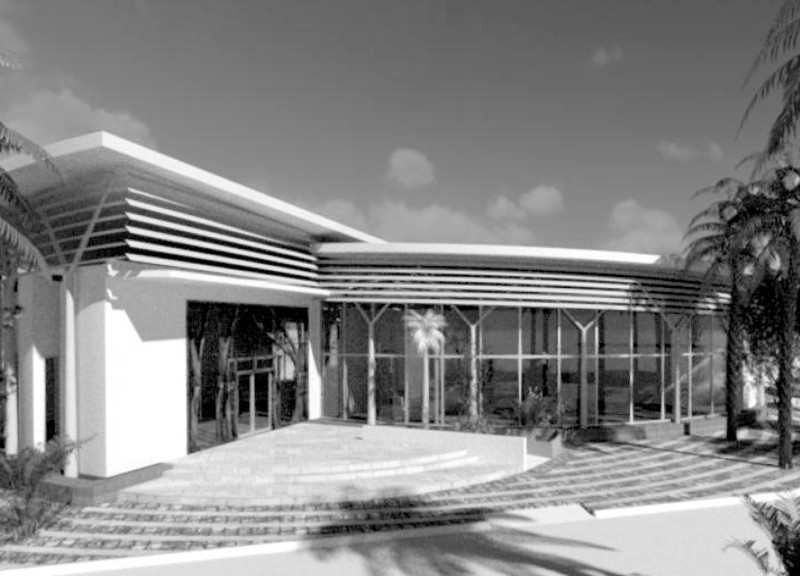5 key facts about this project
The Abu Dhabi Flamingo Visitor Center is situated within the Al Wathba Wetland Reserve, an important area for wildlife conservation in Abu Dhabi, UAE. It serves as a valuable resource center for both visitors and researchers, focusing on the region's rich biodiversity, particularly its population of Greater Flamingos. The design emphasizes a connection between the constructed environment and the surrounding nature, enhancing education and awareness about local conservation efforts.
Environmental Integration
This project incorporates practical cooling strategies to address the hot climate of the region. Date palm trees are strategically placed around the site to provide shade and enhance airflow, improving visitor comfort. A small pond situated in the courtyard aids in cooling through evaporation, creating pleasant breezes that help ventilate the space naturally.
Architectural Expression
The structure features a lightweight design, primarily using aluminum in its columns and roof trusses. This choice not only simplifies the construction process but also reduces the overall load on the foundation, limiting land disturbance. The roof system includes reflective and bulk insulation, which work together to control indoor temperatures and promote cross ventilation.
Functional Zoning
Various areas within the visitor center are organized to enhance the visitor experience. The layout includes essential spaces such as the foyer, gift shop, café, and educational zones. These areas invite interaction, allowing guests to engage with different aspects of the conservation mission. Observation spots are thoughtfully positioned to offer views of the wetland, allowing visitors to connect more deeply with the local wildlife.
Distinctive Design Features
Long roof overhangs and louvres are important details that provide necessary shade from the intense summer sun, supporting energy efficiency. They also contribute to the overall aesthetic of the building, creating a balanced environment. The design promotes not only learning about the ecosystem but also enjoying the natural beauty of the wetland reserve.






















































